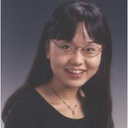Osteoclast-like multinucleated giant cells in sinonasal inflammation of granulomatosis with polyangiitis (Wegener's granulomatosis).
Klíčová slova
Abstraktní
OBJECTIVE
To determine whether generation of osteoclast-like multinucleated giant cells (MNG) is a general feature of granulomatosis with polyangiitis (GPA).
METHODS
MNG phenotype of GPA sinus was examined by immunohistochemistry using antibodies against CD68, and cathepsin K. Tartrate resistant acid phosphatase (TRAP) expression was assessed by enzymatic color reaction. Effects of bacterial wall components peptidoglycan (PGN) or lipoteichoic acid (LTA) on TRAP + MNG formation were determined.
RESULTS
Tissue infiltrating MNGs in sinus expressed CD68, TRAP, and cathepsin K. They were strikingly less frequent in sinus than in lung lesions (23.1% vs. 70%, p=0.04). PGN and LTA inhibited MNG formation in a dose-dependent manner.
CONCLUSIONS
While the generation of osteoclast-like MNGs is an intrinsic feature of GPA, MNGs are rare in sinonasal GPA lesions. Inhibition of MNG formation by bacterial cell wall components may occur preferentially in this sinonasal microenvironment, and contribute to these striking regional pathological differences.


